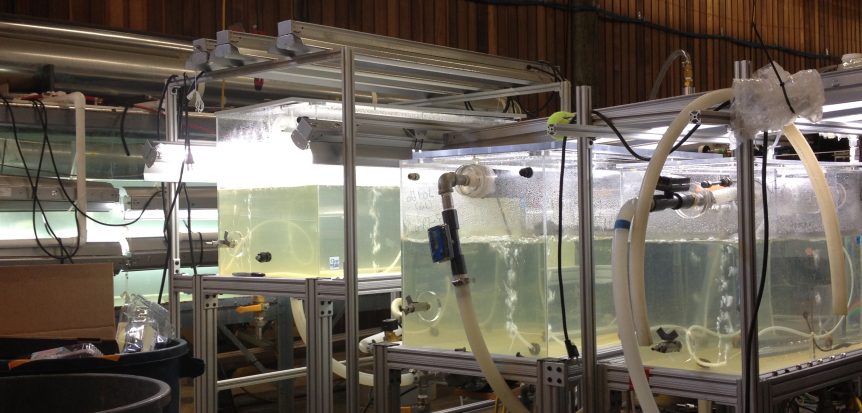CAICE shows the importance of biogeochemical complexity in sea spray aerosol — now published in PNAS.
The first indications that small particles suspended in the atmosphere, called aerosols, had an influence on our climate were suggested at the turn of the 20th century by the Swedish scientist Svante Arrhenius. A famed electrochemist, Arrhenius was also the first to develop the idea of the Greenhouse Effect almost as a scientific ‘hobby’ alongside his Nobel Prize-winning work in a totally separate topic. Around the same time, John Aitken, a meteorologist and physicist, showed that these small suspended aerosol particles were actually the seeds for cloud droplets. These two findings would come to be the genesis of an entire field of research that is critical to our understanding of Earth’s climate.
A large amount of scientific work has been done throughout the last century on improving and quantifying our understanding of the influence of aerosol particles not only on our changing global climate, but also on atmospheric chemistry, visibility, weather, and human health. The exact influence of man-made aerosols on the energy balance in the atmosphere (which is key for understanding global temperature) actually rests importantly on the abundance and characteristics of natural aerosol particles like desert dust and sea spray. Many studies of these natural types of aerosol particles have been conducted, especially since the 1960’s, both in laboratories and in the natural environment. The key to bringing laboratory and field study findings together is replicating the large variety of chemical interactions in the natural environment, while maintaining a particle generation mechanism (bursting bubbles made by breaking waves in the ocean) that is physically accurate.
To that end, CAICE brought the chemical complexity of the ocean into the laboratory by constructing a mesoscale ocean-atmosphere facility at Scripps Institution of Oceanography. This facility allows CAICE scientists and their collaborators to investigate the process of sea spray generation in a controlled environment that produces physically accurate waves, which are chiefly responsible for making sea spray. The ocean-atmosphere facility can be supplied with natural seawater, and even can play host to algae and bacteria cultures or even full ‘mesocosm’ experiments, in which the natural interactions of different biological communities (e.g., phytoplankton, bacteria, viruses) are initiated in this controlled setting. CAICE scientists have conducted this type of experiment and have now published some of their major findings in the Proceedings of the National Academy of Sciences (Early View, 25 April 2013). They found that the ability for aerosols to act as cloud droplet seeds (in liquid and ice clouds) is dependent on the biological activity occurring in the seawater and their complex biogeochemical processes. At the same time, the new approach to analyzing aerosol particles used in this study allowed CAICE to chemically characterize a large quantity of individual sea spray aerosol particles with an unprecedented wide range of sizes. This type of information should help further studies target important elements of the ocean-atmosphere system and work towards reducing the large scientific uncertainty in climate predictions.
Read more about our work:
Researchers unmask secrets of sea spray and clouds – Climate Wire
Biological Activity Alters the Ability of Sea Spray to Seed Clouds – Science Daily

